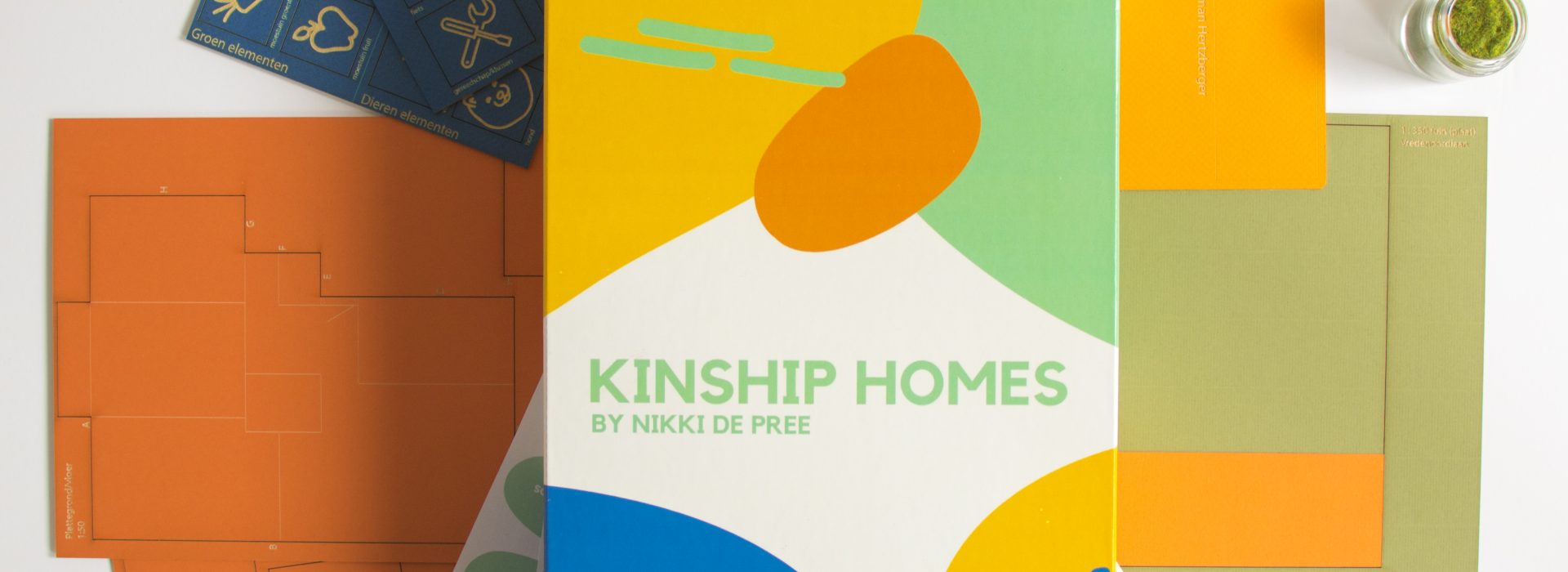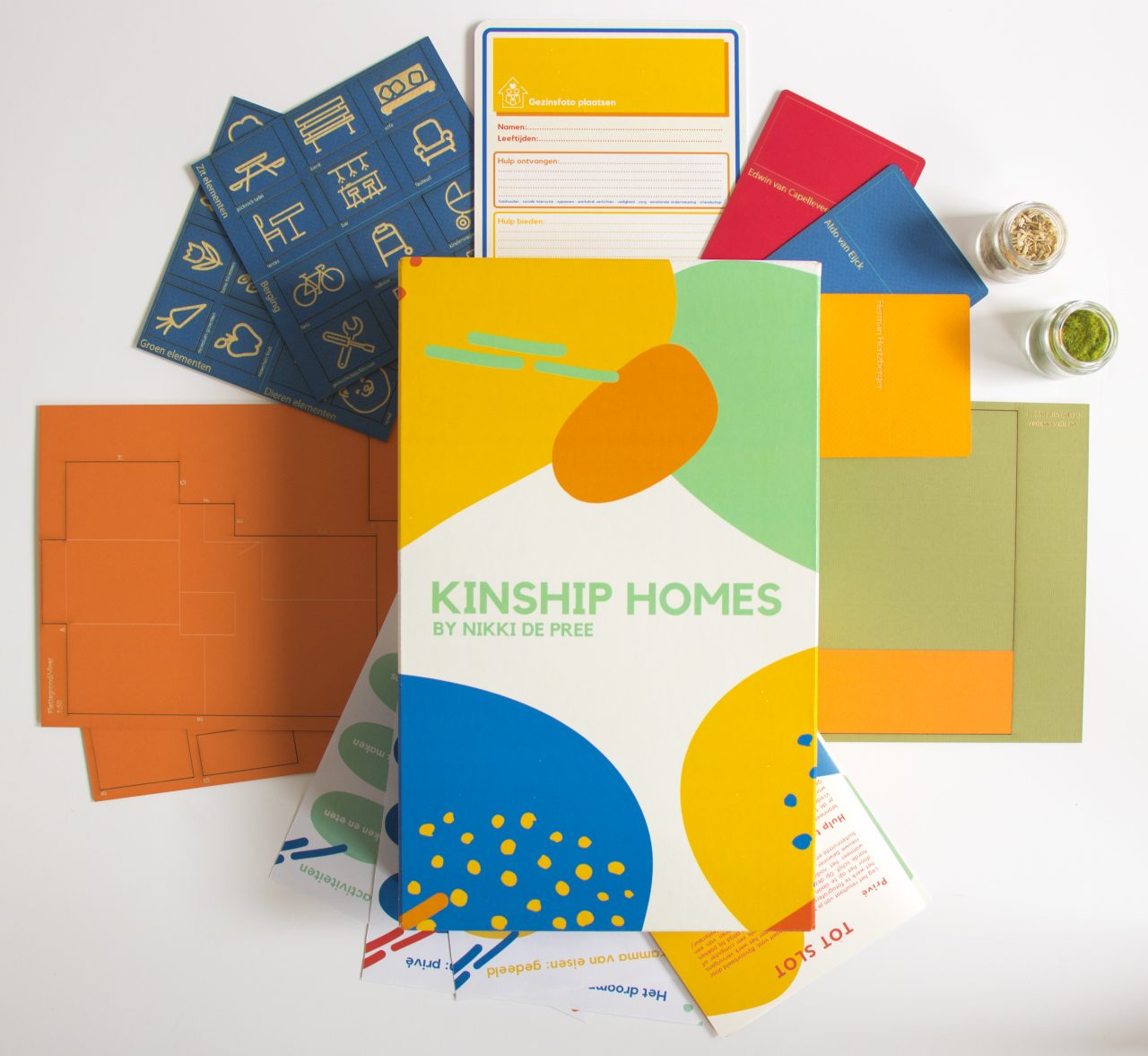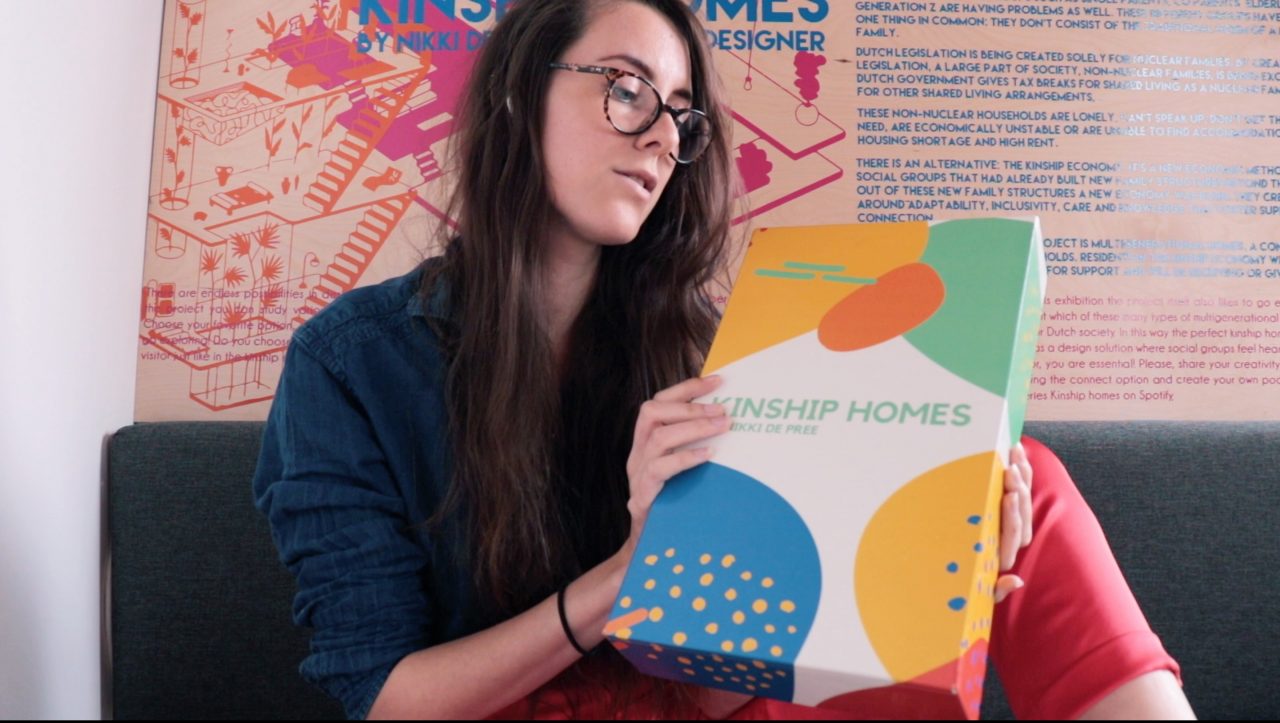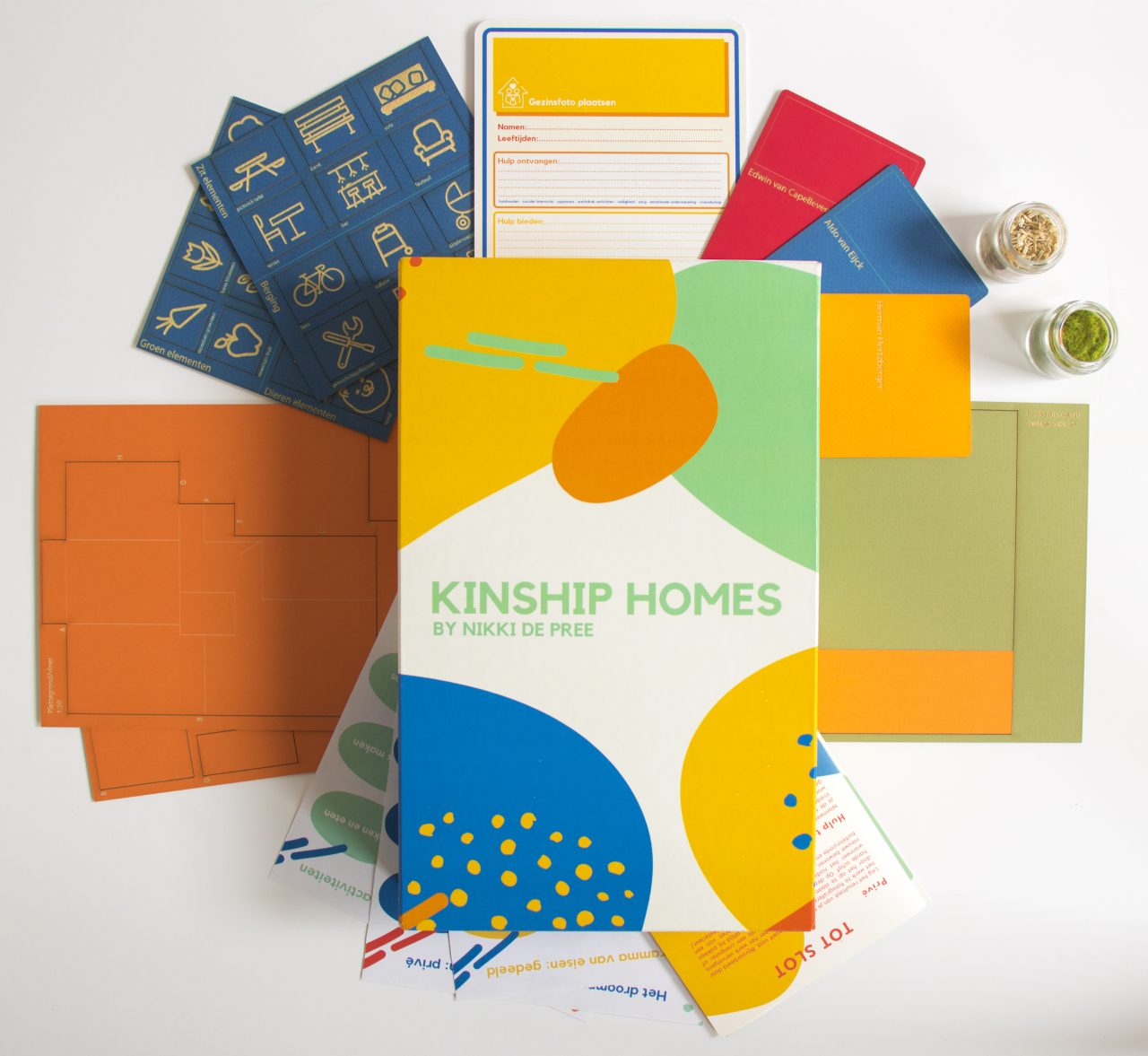Kinship Homes

My research argues that past political and economic systems have failed many social groups and reveals their daily life struggles to benefit from society. Housing shortage and high prices, gentrification, loneliness, work pressures are all being given a lot of attention here. As well as related subjects such as the increasing demand for ‘sensus communis’ and the community art movement.
Nominee Drempelprijs Social Practices
Research:
(Dutch below the page)

What developments have happened in recent years for the neighbourhoods in Rotterdam, specifically in Kralingen? What consequences does the arrival of the associated problem themes (such as housing shortage, high housing prices, gentrification, loneliness and work pressures) have for the Rotterdam housing market and its current occupants? How can the spatial innovation of a kinship home serve as a useful tool for these consequences?
– Research question by Nikki de Pree
This research document argues that past political and economic systems have failed many social groups and reveals their daily life struggles to benefit from society. Housing shortage and high prices, gentrification, loneliness, work pressures are all being given a lot of attention here. As well as related subjects such as the increasing demand for ‘sensus communis’ and the community art movement.
Focusing on kinship, this paper explores: which groups can use new bonds, how legislation exclude them, what kind of spatial designs can function as solutions, when a kinship home works as a useful source and example for our current housing market.
The goal is to tackle the previous mentioned problems and struggles that many social groups experience on daily basis by placing residents from different generations, backgrounds and income together in one home: a Kinship Home. The advantage in this spatial concept is that every resident brings their own qualities and struggles. The quality of one person can function as a useful source towards an others struggle. In this way a web of useful possibilities, solutions and tools is being created within its own walls, ready to function as healthy community.
It is important that residents of a kinship home share similar lifestyles to accomplish this new way of living based on social inclusion and interaction. In this way the residents will be receiving and/or giving help to tackle the daily life struggles from themselves and their peers. Working together, can result for a resident in independency from the liberal and political systems that failed them in the first place.
Do you want to read my full research document? Click here
Project:
The purpose of this toolbox is to find out what the ideal spatial design of a kinship home is. The necessary information is collected in a playful and spatial way from the relevant social groups and residents in order to design a kinship home that fits the specific needs of the residents.
– Kinship Home Toolbox by Nikki de Pree
Do you want to see my project presentation video on Youtube? Click here
This video is important for the jury of the ‘Drempelprijs’. It is highly recommended to watch it in order to really connect with my project!

At the beginning of this project my intention was to design a kinship home as a spatial designer. This line of thinking has slowly changed because of the Corona crisis and all its consequences. It does not feel right to make a spatial design with insufficient information about what exactly the residents want.
As a result of this crisis, I experienced difficulties as a social designer. My standard as a community artist is to collaborate with relevant social groups throughout the entire design process. I do this by interviewing experts, conducting experiments and by interacting with the vulnerable groups I want to help. Corona has ensured, despite several attempts, that this personal and social process could not be realized.
I decided that because of this crisis I received too little information from the vulnerable groups to make a detailed spatial interior design. It got me thinking. How can I get the right answers?
My solution is the design of a game toolbox: necessary information is collected in a playful and spatial way with the aim to design a kinship home that fits the specific needs of the residents.
The toolbox contains various elements for a playful process and concreet end result:
- Wie ben ik?
- (Who am I?)
- My redefined family!
- (My redefined family!)
- Het droom programma van eisen
- (The dream program of requirements)
- De huiskaart om de route te vinden
- (The house map to find your route)
- Modulair interieur, hoe zit dat?
- (Modular interior, what is it?)
- Eigen huis en tuin in miniatuur
- (Own miniature house and garden)
Onderzoek:

Welke ontwikkelingen hebben de wijken in Rotterdam, met extra focus op Kralingen, in de afgelopen jaren doorgemaakt? Welke gevolgen heeft de komst van de geassocieerde problematiekthema’s (zoals woningtekort, hoge woningprijzen, gentrificatie, eenzaamheid en werkdruk) voor de Rotterdamse woningmarkt en z’n huidige bewoners? Hoe kan de ruimtelijke innovatie van een verwantschapshuis dienen als hulpmiddel voor deze gevolgen?
– Onderzoeksvraag van Nikki de Pree
“Op dit moment zijn er veel sociale groepen die dagelijks moeite hebben om te profiteren van de samenleving. Dit komt doordat er in de afgelopen jaren bepaalde veranderingen hebben plaatsgevonden binnen politieke en economische systemen. Als gevolg zijn er problematiekthema’s ontstaan als: woningtekort, hoge woonprijzen, gentrificatie, eenzaamheid en werkdruk.
Uit onderzoek is gebleken dat er bij deze mensen meer activiteit is binnen het ‘sensus communis’ zintuig. Dit doet beroep op gemeenschappelijke emoties en gevoelens tussen mensen. In andere woorden mensen zijn op zoek naar verwantschap. Het concept kinship homes (verwantschapshuizen) is hieruit ontstaan.
Het doel is om de behoefte naar gemeenschap te vervullen en de eerdergenoemde problemen aan te pakken door bewoners van verschillende generaties, achtergronden en inkomsten samen te brengen in één woning: een kinship home. Het voordeel van dit ruimtelijk concept is dat iedere bewoner zijn eigen kwaliteiten brengt. Wat voor een bepaalde groep een lastig probleem is, is voor een andere groep nauwelijks een uitdaging. Daarom is het belangrijk om verschillende sociale groepen samen te brengen en niet alleen gelijkgestemden.
Het is belangrijk dat bewoners van een kinship home een vergelijkbare levensstijl hebben om deze innovatieve manier van leven (gebaseerd op inclusie en interactie) te realiseren. Een kinship home helpt bewoners onafhankelijk te worden van overheidsinstanties.”
Wilt u mijn hele onderzoek lezen? Klik hier
Project:
Het doel van deze toolbox is om erachter te komen wat het ideale ruimtelijke ontwerp van een kinship home is. De benodigde informatie wordt op een speelse en ruimtelijke manier verzameld van de relevante sociale groepen en bewoners om een kinship home te ontwerpen die past bij de specifieke vraag van bewoners.
– Kinship Home Toolbox
Wilt u mijn project presentatie video op Youtube zien? Klik Hier
Deze video is belangrijk voor de jury van de ‘Drempelprijs’. Het is aanbevolen om deze te kijken, om het project goed te begrijpen!

Bij de start van dit project was mijn intentie om een kinship home te ontwerpen als ruimtelijk vormgever. Deze gedachtegang is geleidelijk veranderd door de Corona crisis en alle gevolgen daarvan. Het voelt niet goed om een ruimtelijk ontwerp te maken met onvoldoende informatie wat nou precies de vraag is vanuit de bewoners.
Als gevolg van deze crisis heb ik als sociale ontwerper moeilijkheden ondervonden. Mijn standaard als community artist is om het gehele ontwerp proces de samenwerking aan te gaan met relevante doelgroepen. Dit doe ik door interviews te houden met experts, experimenten uit te voeren en de interactie aan te gaan met de kwetsbare groepen die ik wil helpen. Corona heeft ervoor gezorgd, ondanks verschillende pogingen, dat dit persoonlijke proces niet gerealiseerd kon worden.
Ik heb besloten dat ik hierdoor te weinig informatie heb ontvangen vanuit de kwetsbare groepen om een gedetailleerd ruimtelijk interieur ontwerp te maken. Het heeft me aan het denken gezet hoe ik dan wel aan deze benodigde informatie kan komen. Hoe kan ik de juiste antwoorden krijgen?
Mijn oplossing is het ontwerp van een spel toolbox: benodigde informatie wordt op een speelse en ruimtelijke manier verzameld met als doel een kinship home te ontwerpen passend naar de specifieke vraag van bewoners.
De toolbox bevat diverse elementen voor een speels proces en concreet eindresultaat:
- Wie ben ik?
- My redefined family!
- Het droom programma van eisen
- De huiskaart om de route te vinden
- Modulair interieur, hoe zit dat?
- Eigen huis en tuin in miniatuur